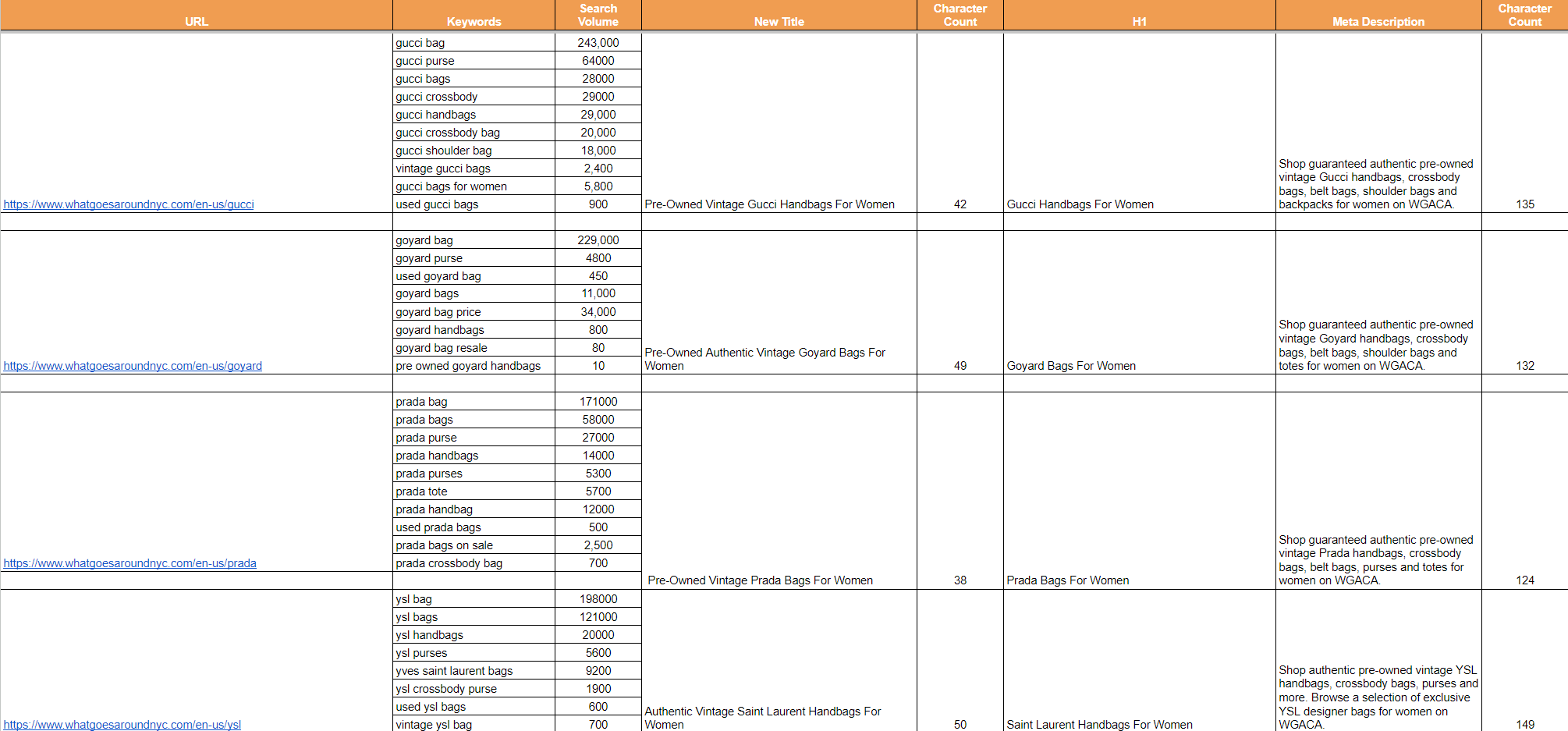
About Lesson
What is Keyword Mapping?
Keyword mapping is the process of selecting the right set of keywords for a page on your site. Your goal is to get these pages to rank for the selected keywords.
Different users have different search habits and use different patterns to search for the same thing on Google. This is why no page on your website ranks for only one keyword, rather every page will rank for hundreds, if not for thousands of keywords which contribute to its traffic.
This is why it is important to know what keywords can a page potentially rank for so that we can increase our chances of ranking in the highest possible positions and driving clicks from them
Keyword Research Template
How to Do Keyword Mapping?
-
- Create a copy of the keyword mapping template in the client’s folder on Google drive
- Find Top Pages on Your Site
- Identify top pages on your website. Top pages on your website can be found using GSC, GA4, Ahrefs or simply understanding which pages might have a higher search demand by talking to your clients.
- When using GSC or GA4, check the past 12 months’ top pages by clicks (GSC) or Organic sessions (GA4) to find out which pages have a high search demand.
- Make sure to exclude pages that aren’t money pages on your site like About Us, Contact Us, T&C, or news or brand updates
- Find Seed Keyword for Each Page
- In order to start the mapping process, first find the main seed keyword that has the highest search volume and relevance to the page
- Use our previously done keyword research sheet, Ahrefs, or GSC to find the seed keyword
- Expand the Seed Keyword to Find Out Secondary Keywords
-
-
- Since we already know that one page ranks for multiple keywords, our goal here is to find out other related keywords for which the target page can rank
- We can use Google search console, Ahrefs or our keyword research sheet to find keywords in the same cluster
- Once we find the first set of keywords, look at the SERP landscape for these keywords to make sure the right type of pages show up. We want to ensure here that the keywords that we select and closely related to our target page so that we can ensure maximum chances of our page ranking for those keywords
-
- Map Keywords for Each Page
-
- Start adding relevant secondary keywords next to each page along with their search volume
- Make sure that you map no more than 5 to 10 keywords per page as getting each of the keyword variation included on the page body might not be possible every time
Once mapping is done, next step is to start writing metadata for these pages
Goals:
- Find out the right set of target keywords for each money page on our site
- Give guidelines to the content team as to which keywords must be included on the page copy
- Help in building a strategic internal linking practice for the whole site
- Better reporting by easily able to measure effectiveness of SEO implementations
Learning Resources:
- https://riseatseven.com/blog/keyword-mapping-guide/
- https://www.semrush.com/blog/keyword-mapping/
- https://www.aleydasolis.com/en/search-engine-optimization/keyword-mapping-cheatsheet/
- https://www.digitalthirdcoast.com/blog/create-successful-keyword-mapping-strategy
- https://www.searchenginejournal.com/keyword-mapping-seo-success/388082/
